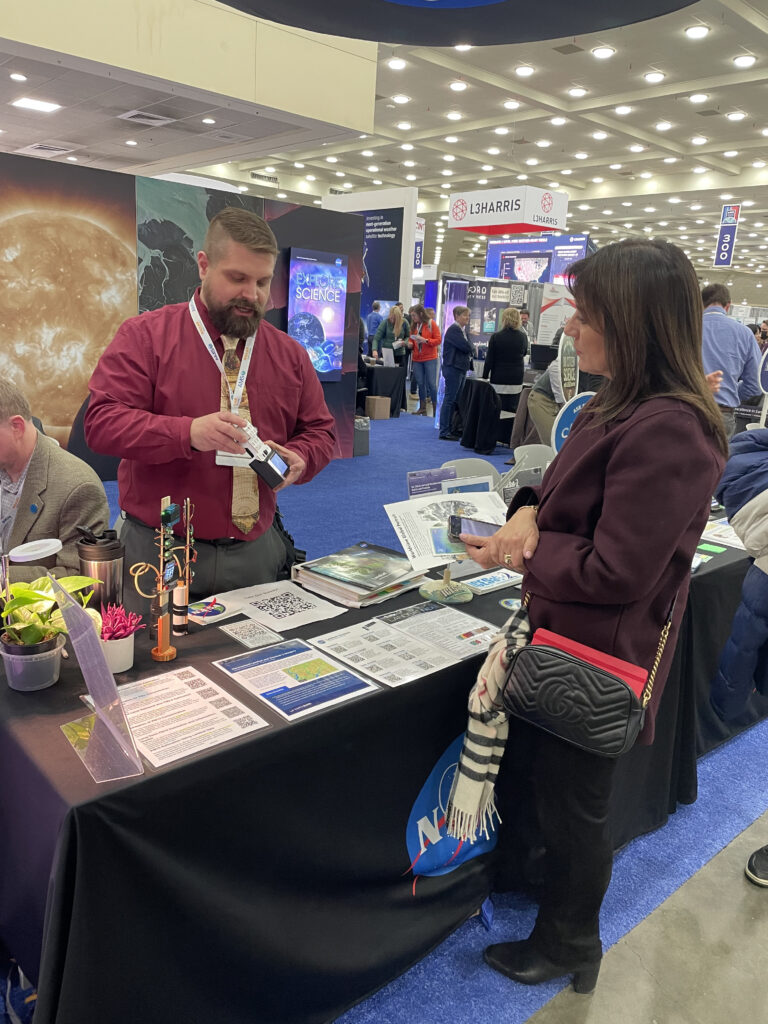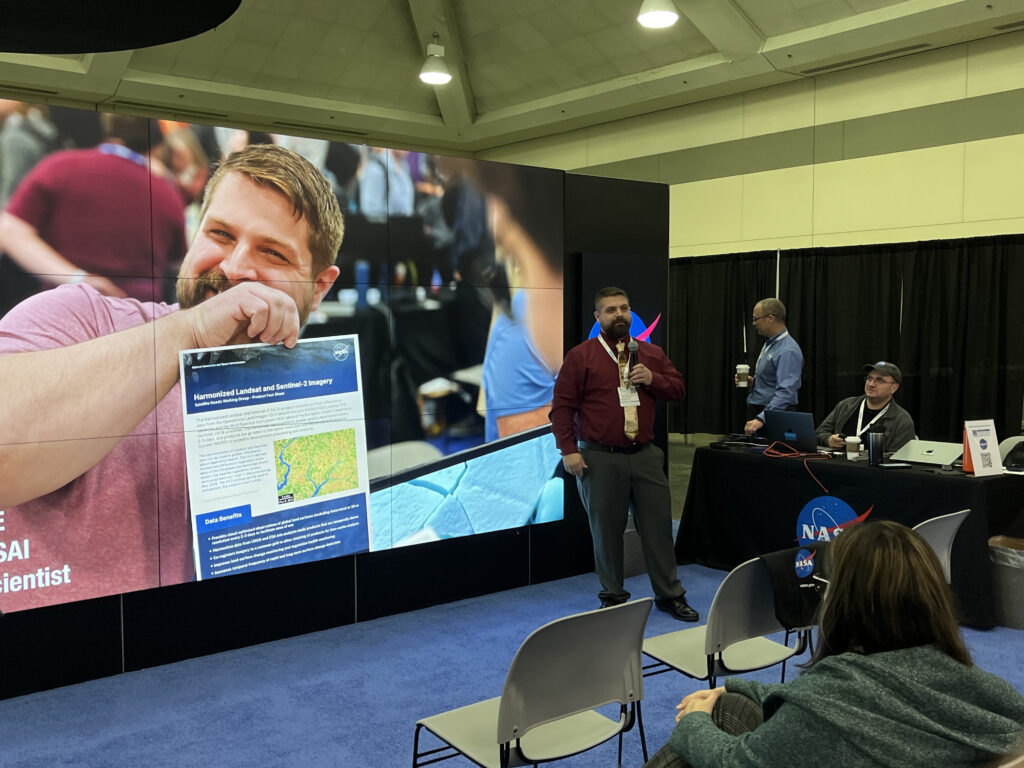
During this year’s American Meteorological Society (AMS) meeting in Baltimore, Maryland, Landsat was represented at the NASA Exhibit Booth by outreach team member Mike Taylor. Information about the Landsat Program, Landsat Next, and the Harmonized Landsat Sentinel-2 (HLS) data product was shared with AMS-goers—5,600 people typically attend the meeting annually.
Taylor also presented a NASA hyperwall talk titled, “The Many Uses of Landsat: Measuring Atmospheric Particulate Matter.” The talk highlighted the varied and broad uses of Landsat and HLS data and gave an overview of the upcoming Landsat Next mission.
The talk was geared towards key AMS audience interests of water, ice, air, and climate change; touching on Landsat’s ability to show symptoms of climate change such as glacier retreat, icesheet loss, lake size changes, and natural disaster aftermath. The satellites’ capacity to help us adapt to climate change, for instance, by helping farmers water their crops more efficiently, was also highlighted during the talk. Taylor also let his audience know that some researchers have reported favorable results using Landsat to monitor air quality by mapping and modeling particulate matter concentrations.

At the Landsat table, Taylor engaged visitors with a duo of inexpensive DIY instruments called STELLA-1.1 and STELLA-AQ. The STELLA-1.1 educational tool enables visitors to collect spectral measurements with a similar approach as scientists, providing a frame of reference to understand Landsat’s science-grade spectral measurements. While with the STELLA-AQ visitors collected indoor air quality measurements of carbon dioxide and particulate matter.
As visitors used the STELLA instruments to measure reflectance from potted plants and the room’s air quality, Taylor expounded on the many, and still growing, ways in which Landsat data is used to understand the environment—and that the Landsat Next mission is poised to expand Landsat’s uses further still.
Taylor also shared with his AMS visitors that he was excited to recently find published research on the use of Landsat data to derive atmospheric particulate matter and Aerosol Optical Depth. Researchers had turned to medium-resolution Landsat data because it was free, open, and it provided a wide overview of urban areas with a fine enough resolution to discern point sources of pollution and the distribution of pollution from those sources. Landsat-derived information can provide insights about urban pollution dynamics and can also help scientists determine the best locations to set up ground monitoring stations. Better air quality monitoring helps protect local populations from the associated adverse health impacts of air pollution such as asthma and cardiovascular stresses. Currently, over four-million people die prematurely each year due to exposure to poor outdoor air quality. This research indicates that Landsat data may be able to improve air quality monitoring methodologies, especially in parts of the world where ground-monitoring is limited.
Taylor’s Landsat table was consistently busy throughout the January 28–February 1 meeting.






